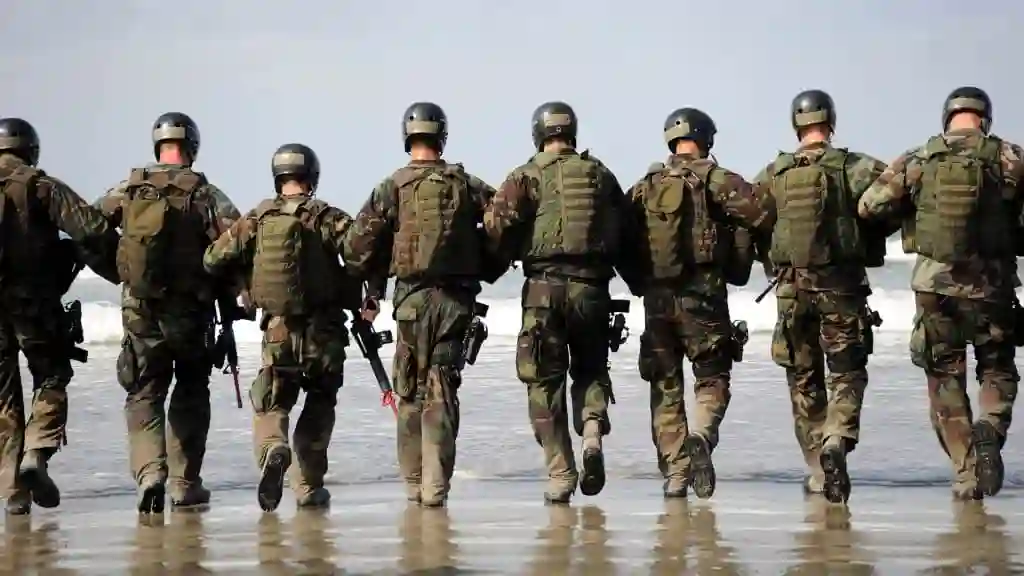Few people are more legendary than Navy SEALs. But the myth of their accomplishments can obscure their failures.
When scandals involving one SEAL after another broke in recent years, the common refrain from Naval Special Warfare Command was that each case was an aberration and didn’t reflect a systemic problem.
Training
Navy SEALs are extraordinary men who volunteer for some of the most arduous military training in the world. While physical strength, endurance and grit are important to a successful candidate, so is the ability to focus on goals and work hard.
From the start of Basic Underwater Demolition/SEAL (BUD/S) training, aspiring SEALs are expected to push their limits, even when they feel like quitting. In the notorious “Hell Week” of BUD/S training, for example, candidates endure seemingly insurmountable tasks for nearly non-stop five and a half days, with only about 45 minutes of sleep per night.
The resulting attrition is high, with only about one-third of candidates who start BUD/S training successfully earning the title of Navy SEAL. Despite the high attrition rate, BUD/S training is still a rigorous process that helps prepare candidates for the rigors of war.
Missions
47 Navy SEAL Quotes to Ignite Your Inner Warrior – Distrakt Art are often deployed to the most dangerous missions in the world. It takes intense courage to sign up for such an arduous lifestyle, and many SEALs leave the elite force at some point.
But others remain committed to the cause. They have pushed for accountability and reform within Naval Special Warfare. They speak out to challenge the mythology surrounding SEALs.
They have highlighted SEAL leadership corruption and violent conduct. And they have warned of the risk to US troops abroad when SEAL leaders do not act on abuses.
During the first decade of America’s “forever wars,” SEALs and other elite special operations units were tasked with conducting raids that often were not publicized. These so-called hunter-killer forces, composed of members of Delta Force, the CIA’s JSOC and DEVGRU (Special Operations Command), targeted senior leadership and high value targets of al-Qaeda and the Taliban. They were known as Task Force Sword.
Leadership
Navy SEALs must be excellent leaders to make the cut. The elite unit relies on its leader to set the tone for morale and culture. But when leadership is lacking, it can create an environment where corruption or violence thrives.
As a SEAL, Szymanski was the embodiment of the Navy’s aspirational moral code. But he also failed to check the violence of his team members. As a result, his promotion to lead Red Squadron was a case of the fox guarding the henhouse.
Jocko Willink, a former SEAL, explains in his book Extreme Ownership that an effective leader is close to his team but maintains enough distance to keep them disciplined. He says this strategy is important for business owners who want to stay on the path toward success. He also stresses the importance of managing stress. He shares that a focus on one day at a time is essential to making it through tough times.
Personal Challenges
The Navy SEALs endure what is perhaps the most intense and grueling training in the world. During the notorious “Hell Week” of Basic Underwater Demolition/SEAL (BUD/S) training, aspiring SEALs are confronted with seemingly insurmountable challenges over 110 sleepless hours. Attrition is high, with only 7-20% of those who begin BUD/S successfully making it through to the end.
To make it through, aspiring SEALs learn to think like SEALs, and that means embracing the idea that failure is an option. One way to do that is by breaking an objective down into a series of microgoals. That way, if you find yourself struggling, you can refocus and keep going. Another important trait is finding a way to laugh. Navy SEALs and psychologists alike agree that a chuckle can help you stay resilient in the face of challenges. And of course, you must never stop trying. If you don’t, the door will be open for someone else to take your place in America’s elite military force.


Comment here